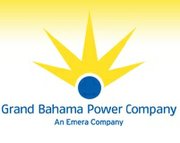By NEIL HARTNELL
Tribune Business Editor
nhartnell@tribunemedia.net
GRAND Bahama Power Company would need “20 times’” the size of its existing solar energy plant to achieve the Government’s “30 by 30” renewable goals, it was revealed yesterday.
Neilsen Beneby, the utility’s renewable energy manager, told a Bahamas Society of Engineers (BSE) luncheon it would need around 300 acres if it sought to meet the goal of generating 30 percent of Grand Bahama’s energy mix from grounded solar systems alone.
While branding the 2030 timeline for achieving this level of penetration as “a very ambitious target”, Mr Beneby said GB Power had assessed five different “scenarios” when it came to renewable generation and the amount of installed capacity required to get there. “We did about five scenarios looking at different levels of energy penetration we’d like to get to, figuring out how much capacity we’d need, and getting the ball rolling,” he disclosed.
Revealing that GB Power sells around 350 gigawatt hours of energy to its 19,800 customers every year, Mr Beneby said 5 percent solar energy penetration would require this renewable source to produce 17 gigawatt hours of sales per year.
He explained that 9.6 Mega Watts (MW) of installed solar generation capacity would be required to achieve this, whereas 35 gigawatts in sales and 20 MW of installed capacity would be needed for 10 percent penetration.
Meeting the Government’s 30 percent renewable penetration goal from solar alone, Mr Beneby disclosed, would require 60 MW of installed capacity and around “115 gigawatt hours of energy sales a year”.
“How do you get there to 60 MW of solar,” he said. “That’s a lot of land. We’re building a 3.3 MW solar farm in Grand Bahama on 15 acres of land. Twenty times’ that takes you to 300 acres of land to get 60 MW.”
Quentin Knowles, the BSE’s president, suggested in response to Mr Beneby’s presentation that New Providence would require around 1,200 acres if it sought to achieve the “30 by 30” goals from ground-mounted solar energy alone.
In reply, Mr Beneby said the need for available land in a heavily built-up, densely populated island such as New Providence could be mitigated by the use of roof-top solar systems, although he acknowledged that cost and ease of management dictated that utility-scale assets should be kept to one or a small number of locations.
He added that GB Power’s Integrated Resource Plan (IRP) had determined solar was the best renewable option for the utility to take, citing cost, land availability and its greater reliability compared to other choices such as wind.
“Our main focus was solar,” Mr Beneby said. “Why solar? As a technology its easier to deploy, solar resources are more dependable than wind, and the build-out of solar systems is relatively cheap. It’s much more flexible is what we see in Grand Bahama.....
“For us in Grand Bahama we saw it as the better option. In our case where we have a lot of available land, we don’t have a lot of high elevations. We saw solar as a better resource to invest in.
“We have 3.3 MW installed on 15 acres of land, and about 12,000 panels. It’ll be about 1.6 percent of the total energy we produce. We’ve a long way to go to meet the 30/30 target, but we’re looking for this project to be completed by October 2019.”
Acknowledging that the Government’s renewable energy penetration goal was “very ambitious”, Mr Beneby said The Bahamas needed to devise the “road map” for how it will achieve this goal over the next decade.
“There’s a lot of fancy targets out there; 100 percent by this year, 50 percent by that year. It’s all about how we build that road map to go from today to where we want to be,” he argued.
“Storage is very, very important. The roof-top and grounded solar systems are very good, but with the intermittent nature of it you need back-up sources and stored batteries. We have to understand how solar behaves and interacts with traditional generation sources, understand when solar is available and how to use it and the land space to hit these targets.
“Thirty percent renewable energy penetration by 2030. What will it take to get there? Will it be solar panels on the roof, on the ground, or do we go to the Family Islands? How do we achieve that?”
Mr Beneby said GB Power’s 100 percent owner, Canadian utility Emera, had embarked on a strategy of “converting fuel to generation assets” group-wide through a strategy that combines increased renewable penetration with initiatives such as fuel hedging.
He explained that fuel hedging has enabled GB Power to hold its fuel charge constant at 10 cents per kilowatt hour (KWh) for the five years through to 2022, giving its business, industrial and residential customers greater stability, certainty and predictability with their energy bills as the base rate has not changed.
“We can now have complete control on the generation assets without depending on foreign fossil fuels,” Mr Beneby said, pointing out the unending price volatility associated with oil. The fuel hedging, and price stability, were the second components of Emera’s turnaround strategy for GB Power after generation reliability.
He added that the utility was now focusing on renewable energy implementation as the third stage in that plan, with solar systems now able to be constructed at a cost to the consumer of 8-9 cents per KWH.
While wanting to “maximise free energy sources”, Mr Beneby said GB Power was constantly assessing when “is the right time to invest” in renewables given the significant capital outlay required.
“We have to balance it as we do not want to drop it on everybody too quickly,” he added. “We have to balance the current cost of what customers are paying today with the cost of renewables in the future.”





Comments
Use the comment form below to begin a discussion about this content.
Sign in to comment
Or login with:
OpenID